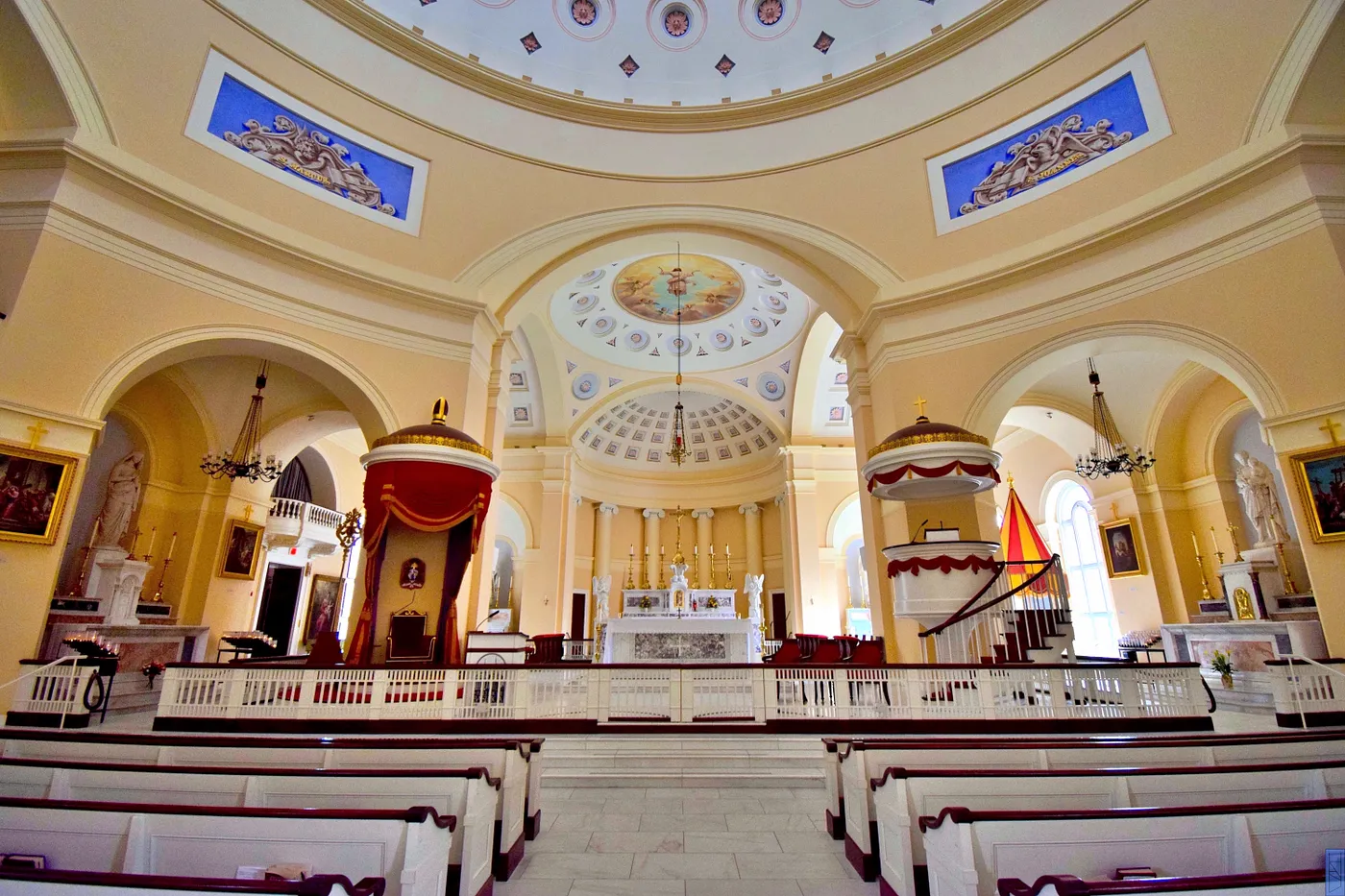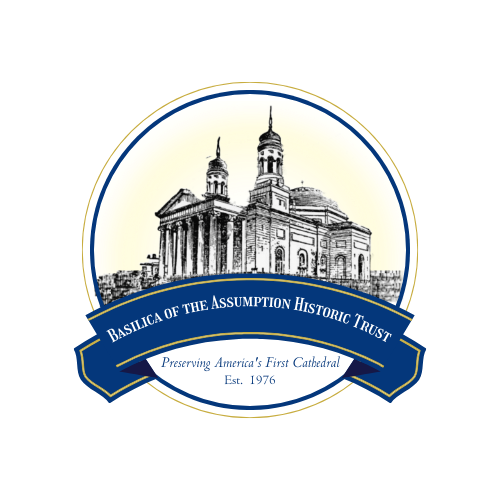Welcome to the Basilica of the Assumption Historic Trust
Preserving America’s First Cathedral. Preserving America’s Catholic Heritage.
Our Mission & Vision
The Basilica of the Assumption Historic Trust was incorporated on April 1, 1976, and charged with the mission to maintain, preserve, protect, repair, and restore all structures and property at the site known as the Basilica of the National Shrine of the Assumption of the Blessed Virgin Mary, Cathedral and Mulberry Streets, Baltimore, Maryland, 21201, which also includes the Archbishop of Baltimore’s Residence.
Past supporters of the Trust helped restore the Baltimore Basilica to its original grandeur. Today, the Trust’s mission is to preserve the Basilica for generations to come.
Custodians of America's First Cathedral Annual Reception

 On October 24, 2022 His Excellency Archbishop William Lori welcomed the Basilica Assumption Trust into his home for an intimate reception celebrating the Custodians of America’s First Cathedral. The Trust celebrated the Custodians and welcomed its first class of new members and honored the first Honorary Custodian of America’s First Cathedral, Teresa Knott.
On October 24, 2022 His Excellency Archbishop William Lori welcomed the Basilica Assumption Trust into his home for an intimate reception celebrating the Custodians of America’s First Cathedral. The Trust celebrated the Custodians and welcomed its first class of new members and honored the first Honorary Custodian of America’s First Cathedral, Teresa Knott.This October the Trust will continue this tradition by welcoming the second class of Custodians.
Details Coming Soon

